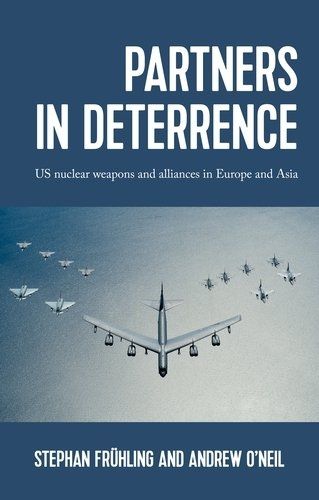Readings Newsletter
Become a Readings Member to make your shopping experience even easier.
Sign in or sign up for free!
You’re not far away from qualifying for FREE standard shipping within Australia
You’ve qualified for FREE standard shipping within Australia
The cart is loading…






From the dawn of the atomic age to the presidency of Donald Trump, nuclear weapons have been central to the internal dynamics of US alliances in Europe and Asia. But nuclear weapons cooperation in US alliances has varied significantly between allies and over time.
Partners in deterrence explores the history of America's nuclear posture worldwide, delving into alliance structures and interaction during and since the end of the Cold War to uncover the underlying dynamics of nuclear weapons cooperation between the US and its allies.
Combining in-depth empirical analysis with an accessible theoretical lens, the book reveals that US allies have wielded significant influence in shaping nuclear weapons cooperation with the US in ways that reflect their own, often idiosyncratic, objectives. Alliances are ecosystems of exchange rather than mere tools of external balancing, Frhling and O'Neil argue, and institutional perspectives can offer an unprecedented insight into how structured cooperation can promote policy convergence.
$9.00 standard shipping within Australia
FREE standard shipping within Australia for orders over $100.00
Express & International shipping calculated at checkout
From the dawn of the atomic age to the presidency of Donald Trump, nuclear weapons have been central to the internal dynamics of US alliances in Europe and Asia. But nuclear weapons cooperation in US alliances has varied significantly between allies and over time.
Partners in deterrence explores the history of America's nuclear posture worldwide, delving into alliance structures and interaction during and since the end of the Cold War to uncover the underlying dynamics of nuclear weapons cooperation between the US and its allies.
Combining in-depth empirical analysis with an accessible theoretical lens, the book reveals that US allies have wielded significant influence in shaping nuclear weapons cooperation with the US in ways that reflect their own, often idiosyncratic, objectives. Alliances are ecosystems of exchange rather than mere tools of external balancing, Frhling and O'Neil argue, and institutional perspectives can offer an unprecedented insight into how structured cooperation can promote policy convergence.